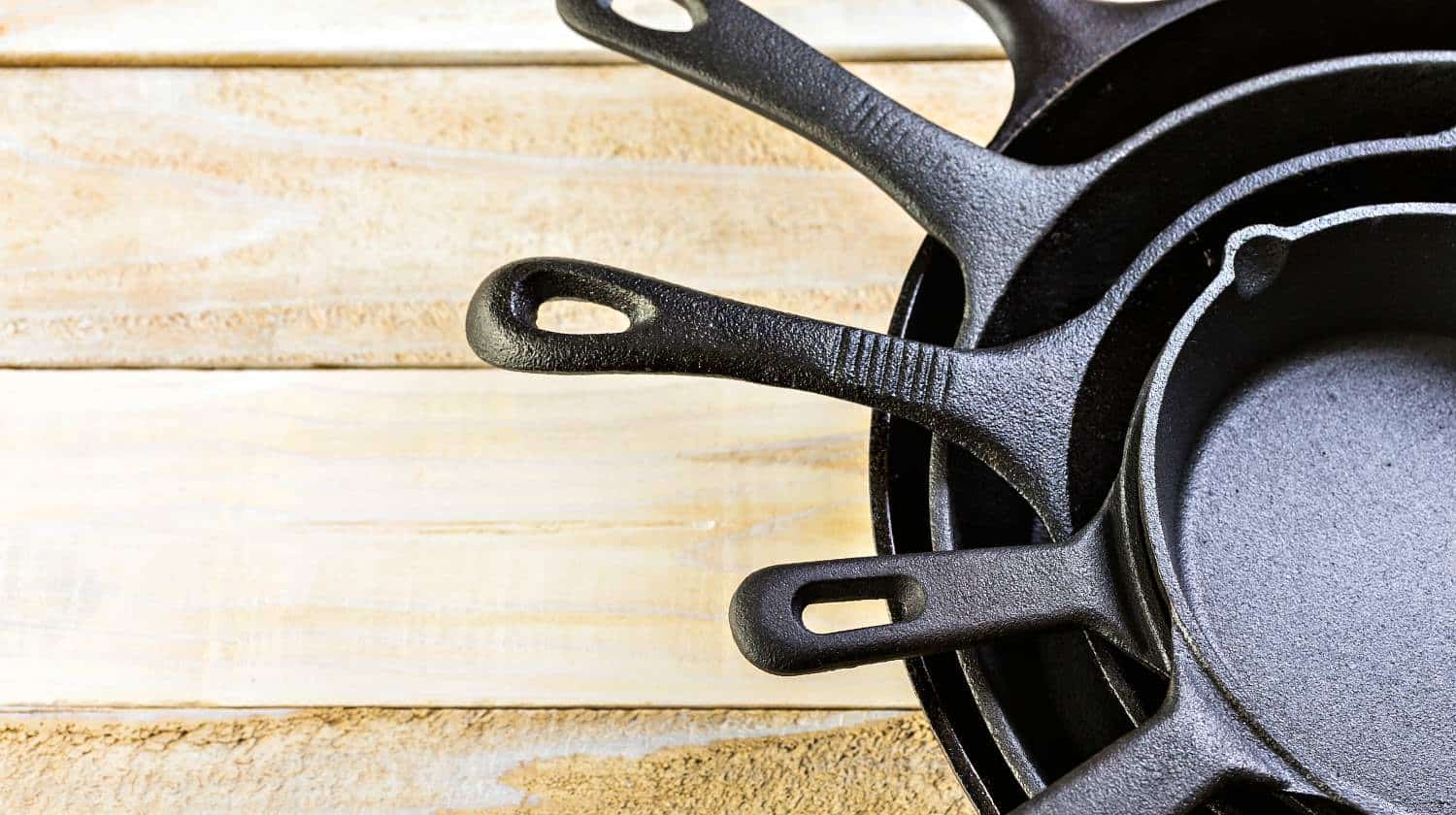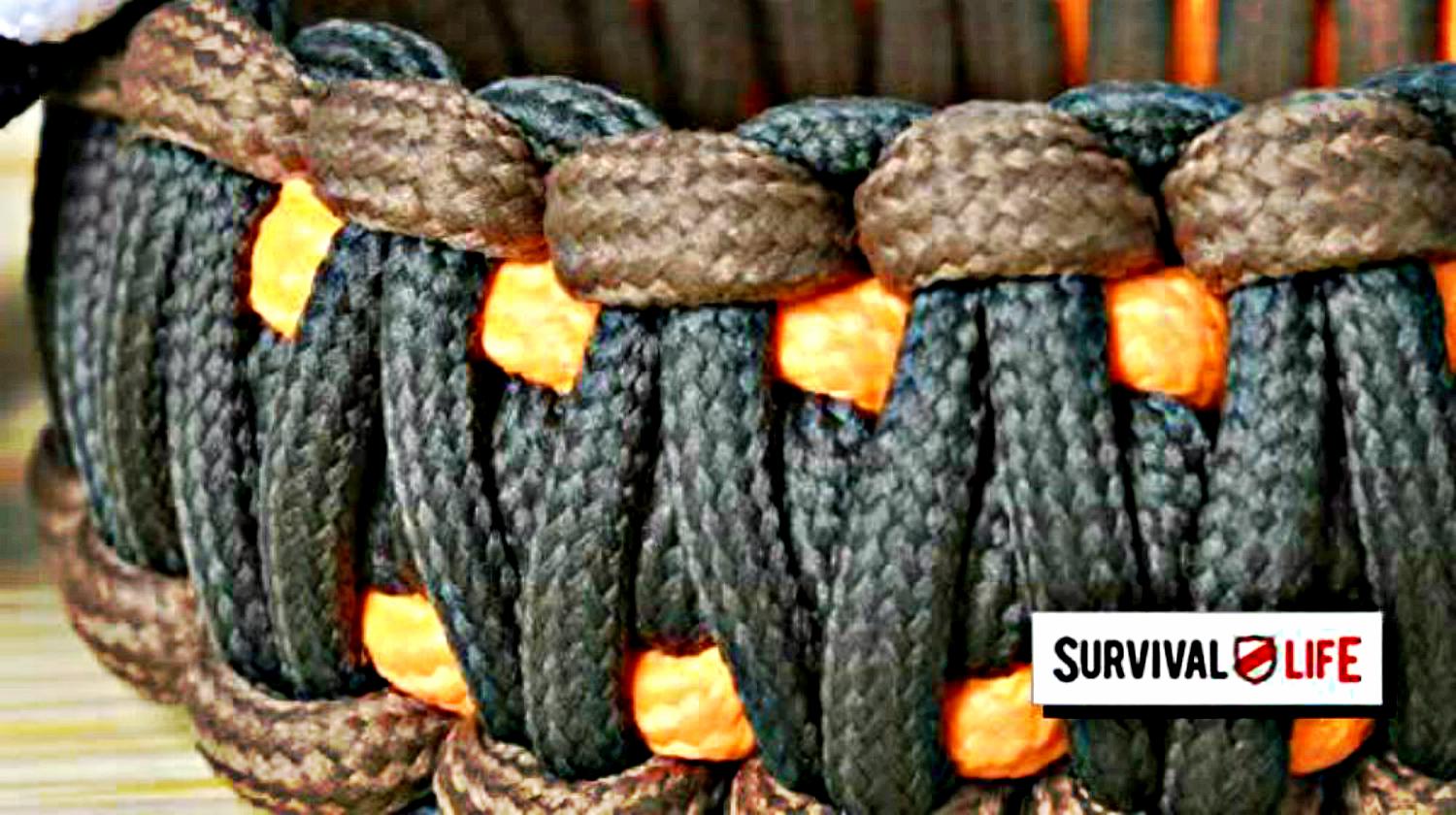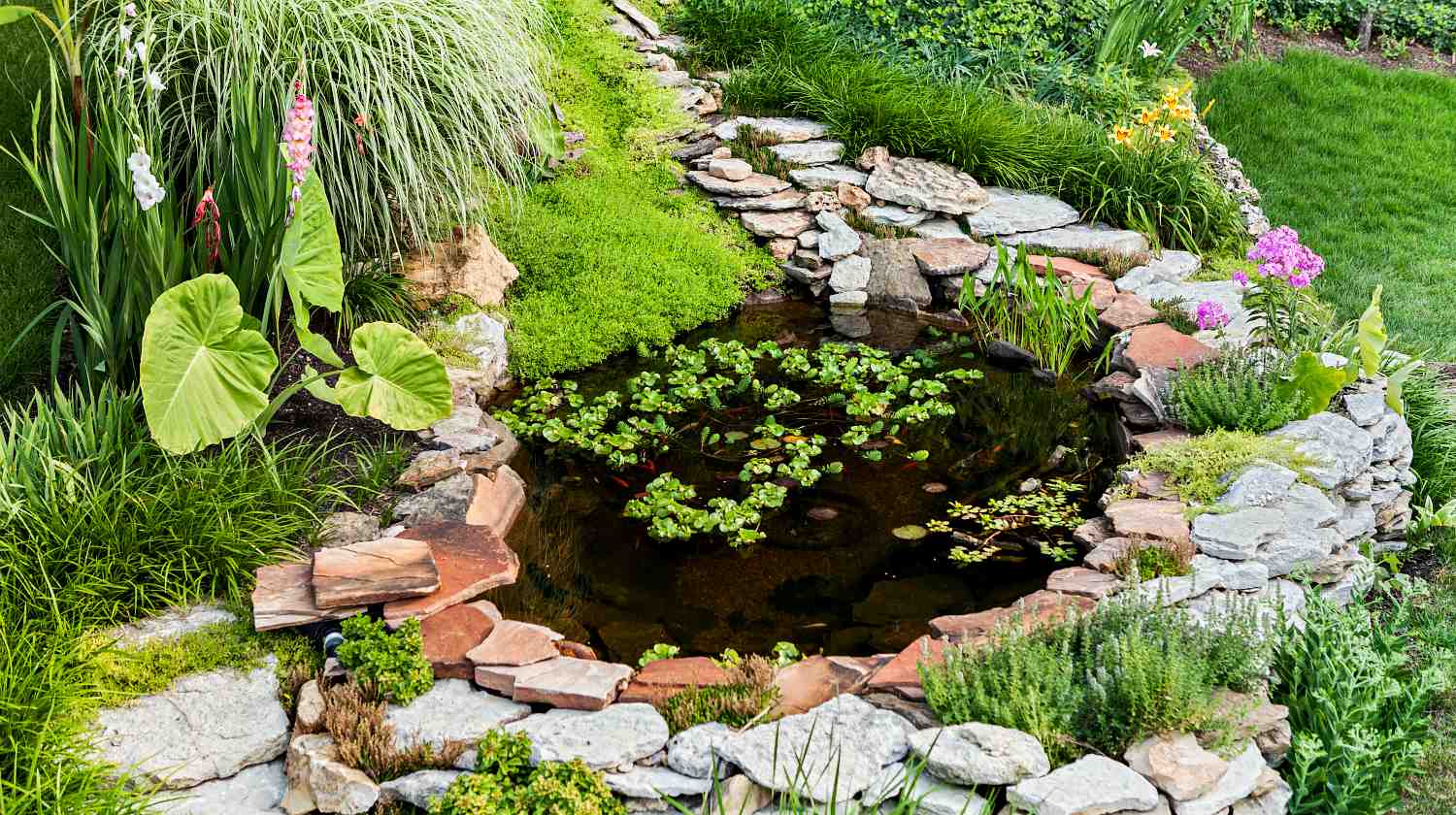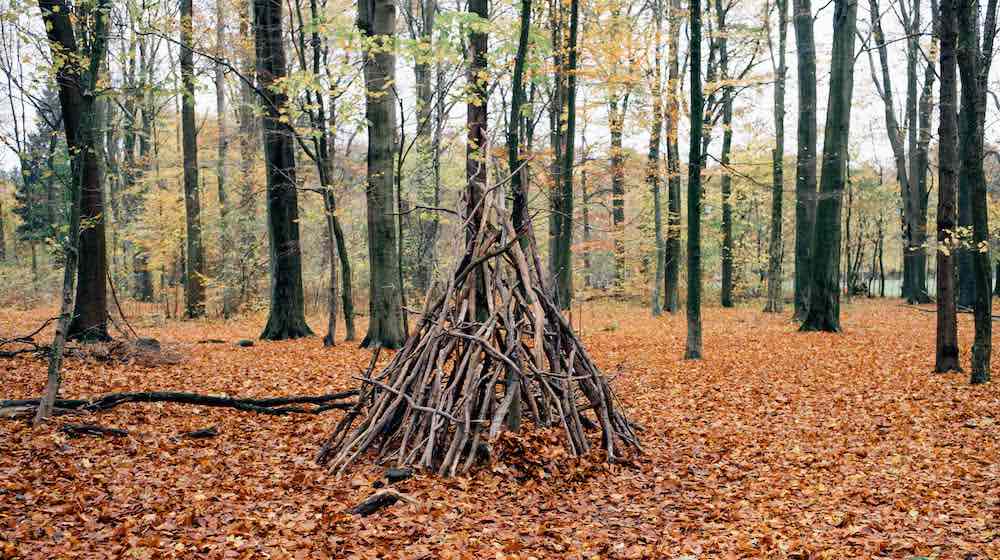Camping
Cast Iron | Is It The Best Camping Cookware?

Cast iron cookware's comeback shows us how this old school camping gear should be a must-have even at home. Read along for more on this trusty cookware, handy for camping and survival!
RELATED: Cooking On The Move; Do You Consider Yourself A Campfire Chef?
Cast Iron Cookware: The Ultimate Camping Cooking Gear
Cast Iron Cookware Through the Years
The expansion of America to the West saw the rise of cast iron cooking wares during the pioneering days of the first half of the 19th century. While films romanticize this part of history, survival and persistence define this era and the cooking ware plays an important part in it.
Although the introduction of aluminum cookware led to the waning of the cook ware's popularity, the sturdy and trusty gear persisted and is now making a comeback. It is popular in camping and outdoor cookouts and even in home kitchens.
Its reliability and sturdiness in handling campfire made it a camping favorite, too. After all, it has always been a favorite since it was first used for the purpose.
Why We Use Cast Iron Cookware
When it comes to cooking, one of the best items you can have in your pantry or on your rack is a good solid cast iron skillet. It is one of the most durable forms of cookware around, and if you know how to use it, it can provide some of the best tasting foods you can imagine.
My family has used this reliable cookware for as long as I can remember and there is just something nostalgic about cooking with it. Regardless of whether I am cooking eggs over a campfire or baking biscuits in the oven, this cooking ware is a champion.
Cast iron skillet is a necessity when it comes to prepping your survival kitchen. Indeed, it is an ultimate kitchen staple that helped feed generations.
The Major Benefits of Using Cast Iron Cookware
1. Durability
Cast iron skillets crafted well over a century ago are still in use today. In fact, with proper care, your skillet should last at least a decade.
2. Flexibility
Cast iron skillets can be used over an open flame, on a grill, on a gas range, in the oven, and even on electric ranges. I have found they work best over a flame, but I have an electric oven and it works quite well on it too.
This is one of the best factors when thinking about keeping the cooking gear in your survival supplies. You can cook with it no matter what heat source you have.
RELATED: 4 Quick And Easy Cast Iron Skillet Recipes To Try Tonight
3. Heat Retention and Dispersion
A properly made cast iron skillet will evenly disperse the heat and allow for cooking without worrying about hot spots, unlike aluminum and steel cookware. This is a huge deal if you have to cook over an open flame where the flames will only kiss the bottom of the pan and not have the constant regulated heat of a stovetop.
4. Iron
Cooking on a cast iron skillet will leach a bit of iron into your meals, up to a few milligrams per item cooked. In a survival situation, you will need as much iron as you can get, especially if you are in any way iron-deficient.
The Best Cast Iron Cookware Brands
Lodge makes a large array of cast iron products. And, if you have the space to store them and are okay with their weight (i.e. you don’t plan on carrying them far), you could make a good investment.
The first one I bought was an 8” flat bottom skillet from Lodge, simply because they are US-made products and Lodge has been crafting cast iron skillets since 1896. They are pretty much the name in cast iron and readily available at most stores.
They are also relatively inexpensive, the 8” skillet bringing in a whopping $10.00 bottom line. My skillet lasted me about 3 years so far, and aside from a little mishap with olive oil (see below) I have never had any problems cooking with it.
Lodge cast iron products are very well-crafted, lasting for decades or longer with proper care. They are practically the only major manufacturer of these old school cooking wares after the rest fell by the wayside in the years of the cookware's decline.
A Little Note on Proper Care
It is good practice to re-season your cast iron pans about once a year. When re-seasoning your pan, NEVER use olive oil, but always use oils and fats with high smoke points.
I prefer to use Crisco and I like to season my pans inside my grill to avoid any mess. Olive oil has too low of a smoke point to be an effective seasoning agent.
It will create an acrid smoke and absolutely ruin the season and finish of your skillet. If you do use olive oil, all you will need to do is strip and re-season your pan.
Note: Never use soap on your cast iron. Soap will ruin your seasoning on the pan.
Some cooks even promote never having to clean the cooking wares at all. You can simply wipe them or scrub with salt, then wipe with a paper towel so as not to damage the cast iron seasoning.
Never take your pan from a heat source and drench it in cold water, doing so will shock the pan and cause it to crack or shatter.
A Minor Disadvantage
I think, the only major drawback to cast iron skillets is its size and weight. I chose the 8” flat bottom skillet from Lodge because it has a “light” weight of about 4lbs with a small size and is easily storable.
However, if the pioneers and trailblazers made it with cast iron cookware over long periods of travel, it shouldn't be a problem when you're car camping. If you're backpacking though, you have to choose between bringing a camp stove or cast iron skillet–I think I'll go with the latter.
Play this video from Primal Outdoors for tips on how to clean cast iron skillet at camp:
Most practical and true blue campers and survivalists will agree, cast iron cookware is the best for outdoor cooking and camping. You only need a fire starting kit and this sturdy pan, and your outdoor cooking kit is good to go.
Do you own cast iron cookware today? How long has it been in your keep? Let us know your cast iron cooking gear story in the comments section below!
Up Next:
- Is Dutch Oven Cooking A Part Of Your Emergency Plan? [Video Tutorial]
- Practical (Yet Delicious) Winter Campfire Cooking Ideas For Outdoor Cooking
- 10 Bear Grylls Quotes That Will Inspire You to Be a Better Person and Survivalist
Make sure your survival gear is fully stocked with the latest and check out the Survival Life Store!
Follow us on Facebook, Instagram, Twitter, and Pinterest!
***Disclaimer: The contents of this article are for informational purposes only. Please read our full disclaimer.***
Editor’s Note: This post was originally published on April 27, 2016, and has been updated for quality and relevancy.
-

 Paracord Projects1 year ago
Paracord Projects1 year agoParacord Projects | 36 Cool Paracord Ideas For Your Paracord Survival Projects
-

 Paracord Projects1 year ago
Paracord Projects1 year agoHow To Make Paracord Survival Bracelets | DIY Survival Prepping
-

 Medical Care1 year ago
Medical Care1 year ago21 Home Remedies For Toothache Pain Relief
-

 Knife Laws1 year ago
Knife Laws1 year agoAre Switchblades Legal? Knife Laws By State
-

 Do It Yourself1 year ago
Do It Yourself1 year agoSurvival DIY: How To Melt Aluminum Cans For Casting














Barry
October 15, 2012 at 11:22 AM
We have 2 10″ skillet’s and 2 3 quart Dutch Ovens. One oven I inherited from an Uncle who only cooked fish in it and left the same grease in it for years I guess, because when i got it, it was half full of fish grease. I sand blasted, scrubbed, used hot soapy water and put charcoal briquets in it trying to get the taste and smell out. Nothing worked.But I have washed mine in hot soapy water, and let air dry for years with no problems. I even make spaghetti in them.
Guess I have been lucky.
Craig
October 16, 2012 at 9:09 AM
Hey Berry, wasn’t quite sure if you were trying to get the fishy taste & smell out or the cast flavor. Anyway’s, try to take and mix dish soap and vinegar with your water and let the pan sit in it for awhile. Then take and scrub it out good using a rough dish spoonge. You may have to do this a couple of times. After doing that and drying the pan good, take the pan and poor some cooking oil into it and set it on the stove letting it heat up good while swishing the oil up aroound the inside of the pan. Make sure you get the oil up along the sides so that the whole inside gets the oil cooked into it. Hopefully this will help out if you have not already got it.
Good Luck,
Craig
Craig
October 16, 2012 at 9:11 AM
Oop’s, sorry about the “e” in your name Barry.
Ken
November 29, 2012 at 6:35 PM
Barry, you may have to take the fishy dutch oven and completely burn it out in a fire to remove the lingering fishy smell.
Let it cool completely in the ashes, then clean it and reseason it. Burning cast iron will also get rid of all of the burned on ‘gunk’ which collects on the bottom of skillets over the years. I have done this for many years.
Just remember the iron will begin to rust after it cools, so clean and reseason it immediately.
For odors which are not as bad as your fishy pot, try cleaning the iron with a solution of half water and half vinegar. Wipe the iron out and let it set.
Ken
Janet
October 15, 2012 at 2:37 PM
If you can’t use soap, how do you clean it. I remember my grandmother using soap and water.
Joe
October 15, 2012 at 2:52 PM
My father would clean them by pouring a can of beer into it and set it on an open flame. He would then allow it to burn off and completely dry. this was only for our camp cast iron.
If you have a good season on it, nothing should stick, simply wipe it out with a paper towel while it is still warm, or allow it to soak in very hot water for a bit and then put it back on the fire until it is dry. ( if it goes into storage with any water on it it will rust)
If you do have something that sticks to the pan, I use hot water, a sponge, and salt, typically a rock salt, the abrasion from the salt will normally rub off any thing that is stuck on.
If nothing else works, and you have to use soap, you will need to reseason the pan again, or be prepared to use much more oil that normal to keep your pan from sticking.
thanks for the comment
Joe
frank
October 15, 2012 at 4:23 PM
What do you do if your cast Iron pan getsw a little rust on it
lea
May 6, 2014 at 3:40 PM
If I have just a little rust, I clean it well with boiling water (I wear rubber gloves) and scrub that particular area well with a stiff brush (not a wire bristle but more like a real broom). That should get the rust off. I then wipe the pan dry with paper towels. Set the pan on a burner (electric or gas) and turn on the heat to medium. What you want to do is make sure there is NO moisture lurking in the metal. You may or may not need to reseason your pan at this stage. It really depends on how much rust there was. If only a little, I simply season with my preferred seasoning (lard, bacon grease). I never use vegetable oils as they tend to get really sticky with age.
My mother had a large skillet that she purchased at a garage sale. She brought it home, scrubbed it up really well. Then she proceeded to cook bacon, and I mean a LOT of bacon! we used bacon in just about everything for a week! That grease seasoned the pan very well. Nothing would stick to the pan! She was also the only one who could clean the pan. Wouldn’t let anyone else touch her skillet.
Chris
October 15, 2012 at 8:47 PM
I have 3 Lodge cast iron skillets, a dutch oven, and a couple of Griswald cast iron skillets. If by some chance, something gets stuck on them, I fill them with water and heat on the stove or set it over the campfire. Let the water simmer and whatever is stuck will come right off. Also don’t use those green scrubbie pads on them. I use something that looks like a little whisk broom only it is stiffer, that scrubs the pans quite well. Also, when we camp, we put liquid dish soap on the bottom, that way the soot from a campfire comes off with either a wet cloth or paper towels. Three of my skillets are close to 25 years old.
steve
October 15, 2012 at 4:20 PM
If you wash it you will not only remove the hard coating (oil that was used during curing),but also the tiny particles of food that over time will make the surface even smoother. Don’t worry about bacteria cooking will kill it. If there is something sticking use table salt,and a little cooking oil on a rag to “sand” it off.
Jane
October 15, 2012 at 3:31 PM
I’ve been using my two “oldest” cast iron skillets for over thirty years. I purchased them used, knowing they will last virtually forever. I also have two Lodge Dutch ovens, two muffin pans, a griddle, and a larger 12 inch skillet purchased more recently (about 15 years ago). Cast iron is easy to cook with and makes great tasting food. Just wipe out with a dry paper towel or rinse clean in very hot water. I’ve used soapy water to clean the skillets, and air dried without problems. However, reseasoning will solve any problems if soaked too long. Coconut oil works well for seasoning. Also, baking cornbread or some other “dry” food in your oiled skillets occasionally will keep them well seasoned. Use a pan spray to prevent sticking, especially if the pan is not well seasoned.
As others have stated, and I can attest from personal experience, cast iron will work well with just about any heat source — wood bonfire, charcoal fire, wood burning stove, gas oven, propane grill, electric stove, or glass/ceramic top cooking surface.
Tom
October 15, 2012 at 5:30 PM
I have Dutch ovens,skillets.griddles,and potje pots (South African kettles) that I have used for over thirty years.If it can’t be cooked in cast iron or grilled it’s probably best not eat it! My daughter is already trying to talk out of them. Maybe another thirty years I’ll think about it. Except for the the potje pots the are all LODGE products,I won’t use any other
Dave
October 15, 2012 at 6:24 PM
I had a set of cast iron cookware, up to a 12″ skillet. Gave them away when my daughter in law sold pampered Chef. Big mistake! I would trade the PC for caast iron if I could find someone who doesn’t know any better. Shame on me.
DHConner
October 22, 2012 at 2:21 AM
Yeah, my sympathy to you. Pampered Chef is about 96% junk. Have a niece that got into that-made a bunch of money, went to Orlando Disney,yada yada. Thing is,it’s a pyramid scheme that relies on your intial customers bringing their friends and on down the line. The only things I saw, and she had it all, were the cast stoneware items, and overpriced at that. She was kind enough to give a couple pieces, and they are ok. The rest it looks like great stuff but is very low quality. Kind of like the girl working the corner–looks good but really not worth the money. I’ve got a set of Henckles 4* I bought for $200 30 years ago (10 peices) that are now nearly $1,000 retail. Now…who did you give that cast iron to? Maybe I can buy it from them.
I’ve got some cast iron I’ve found in abandoned garages, alleys, and houses. All they needed was a good going over with 4-0 steel wool and some Comet and then dish soap. They cleaned up just fine, and no they don’t taste like soap or Comet. Between the chlorine in the Comet and then wiping them dry and putting them in an oven at 300 degrees you know anything that might have survived is well on it’s way to what ever heaven it might have. I didn’t kinow about the olive oil being a bad choice, but that we can change.
Now, ante up and build your Lodge collection. A lesson learned the hard way (and mine are inumerable)does tend to stay with you. Grieve no more and soldier on. Your heirs will love you for the foresight and good judgement.
Semper Fidelis & Semper Vigilans
David LeVine
October 15, 2012 at 6:36 PM
A word of warning: DO NOT use PAM or any other cooking spray with silicone oil in it on a cast iron pan. It will prevent proper seasoning after application.
The cheap canola oil/lecithin based sprays are fine.
John Bowie
October 23, 2012 at 3:56 AM
Ever wonder what “canola oil” actually was? You might want to research it bewfore you use it……man made synthetic products kill.
William Lollar
November 21, 2013 at 7:57 PM
Canola oil has taken a bad rap from a lot of internet hoaxes. This article from the Mayo Clinic might help clarify.
http://www.mayoclinic.com/health/canola-oil/AN01281
Brian
October 18, 2012 at 1:39 PM
I ‘inherited’ an 8″ cast iron skillet my parents got for their wedding in 1966. My dad kept it when they divorced and when he died I got it. I still use it regularly and have added a 10″ and 12″ to the collection. I HAVE other skillets/pans, but don’t use them. The cast skillets are all WELL seasoned and virtually non-stick (my teen son who tries to ‘flash fry’ everything can occasionally ‘get’ something to stick, but that’s it).
I never use soap and rarely use water of ANY temp on them. I season AND clean them with lard (not shortening, but real animal fat based LARD – cheap at most stores). Most times I can simply wipe them out with a paper towel because virtually nothing sticks. If I DO need to dislodge something I will heat the pan to melt a teaspoon of lard in it, then use a stainless steel pad (NOT steel wool, but the newer curly/stainless ones) to scrub it. The liquid lard and a little ‘elbow grease’ has never failed. Then I simply wipe out with a paper towel and drop another teaspoon of lard in it to melt and retain the seasoning.
Before someone ‘cries wolf’ concerning the lard, I rarely COOK with lard, preferring the taste and health benefits of olive oil. Lard is cheap, makes a good cleaning/seasoning agent, and because the pans never see water and are always coated they don’t rust. And I prefer the minimal health ‘risks’ of lard as a non-stick coating over some of the commercial ‘alternatives’ (teflon, etc). I cook over 90% of our meals and LOVE my cast iron cookware!
Joe
October 18, 2012 at 3:13 PM
Thanks for the response Brian,
I use crisco because it is readily available to find here. I would prefer to use lard but, living in such a health conscious city it is becoming exceedingly hard to find pure lard at the store, aside from the occasional 10lb block of it, which is way more than I need. I also like cooking with olive oil as the flavor is amazing, but I’ve found it to leave a bad after taste in my pan if I don’t wipe out all of the leftover oil. My grandmother used to cook bacon or sausage in the pan and then leave the leftover grease to “steep” as she called it, in the pan for a day or two, then she would put the cast iron in the oven and allow the grease to melt and simmer for a couple of hours at low heat ( under 300). Not sure what this did but that pan made the best gravy I have ever had. That gravy went perfectly with her from scratch buttermilk “drop biscuits” that she cooked in her big skillet. Come to think of it I think I may get that recipe out of her and post it here 🙂
Thanks again for the comment!
Joe
Ron
August 23, 2016 at 9:10 AM
If you want to find an alternative to lard or pam just use your collected Bacon Fat… Works and tastes awsome for ether cooking (we all know that) or seasoning and re-greasing the pan after washing it. I’ve used soap to wash mine out decades and have Never removed the seasoned coating or had ANY taste bleed-over at all. Ya just can’t get crazy washing them so you don’t damage the seasoned coating on the cast. Common sense strikes again ! ! Oooops. did I say a bad word there ?
Janet
October 19, 2012 at 8:33 PM
This is great, as a Kentucky woman, many delicious meals have come out of iron cookware and enjoyed immendsly. Thank you for sharing, it’s the little tidbits of experience that makes the difference. SRDC’s http://www.srdcBlog.com has a very similiar objective, and that is to help people make the most of what they have. Surviving good times and bad times is a lot easier when you know how to use properly your iron skillet! Good job !
DHConner
October 22, 2012 at 2:27 AM
Hurry up and get that recipe on here!! My Granma did the same thing and I don’t think anybody could lift a stick big enough to beat those biscuts.She’s gone on ahead, and I expect when we next meet she’ll have a big old pan of chicken gravy and biscuts.
CONNIE
October 23, 2012 at 1:31 PM
HI JOE. I WOULD LIKE THAT RECIPE IF YOU DON’T MIND. MY GRANDMOTHER DIED BEFORE I COULD GET IT OUT OF HER.
Ken
November 29, 2012 at 6:27 PM
Good article for beginning cast iron users. Keep them clean, dry, and apply a light coating of oil after cleaning.
Over the years I have used many different oils. IMHO, Crisco works as well as anything. If anyone wants to learn more, there are some good dutch oven cooking groups on Yahoo which are full of information.
Nothing cooks a roast better than a cast iron dutch oven.
Ken
Herb Wyatt
December 4, 2012 at 1:36 AM
Got to praise cast iron. I have pieces used by my grandmother that may be over 100 years old (I am 78). Grandma cleaned the cast iron by first wiping out the grease and other residue and would fill the pot, pan or sklillet about half full of water, set it on the the old iron, wood burning cook-stove and let it boil. The boiling would loosen and stuck food or liquic residue. She would pour out the remaing water, wipe it out with her homemade feedsack dishrag (china and glassware got the floursack dishrags. Heavy duty cookware got the stronger, more absorbent cotton feed sack cloths). When the iron cookware got too much baked-on grease residue, they would be placed around the big iron wash pot and burned clean while heating the water in the wash pots. This was another great piece of equipment. We heated waster for washing; bodies and chothing, made hominy, soap, scalded hogs (already dead) to loosen the hair prior to scraping the skin for cleaning)when hog killin’time came around (come to think about it, it probably disinfected a dirty hog, also),rendered the skin and fat for lard and used part of the lard for making soap in the pot,and for a really big fish fry, dump about five gallons of home-made lard in it and fry up to 20 or so pounds of fish at one time. Have always wanted to get me a wash pot. One of these days…..
Beth
December 6, 2012 at 12:54 AM
I use nothing but cast iron skillets for everything except speghetti sauce,(it soaks up too much of the iron taste for me. I’m so glad to hear all of the cleaning advice, and Joe, I would also love to have that recipe. Just started using my new woodstove, can’t wait to cook on it. In fact, I’ll share my great aunt Lucy’s recipe , all she had was a woodstove to cook on until the 70’s. She lived in Kentucky.
In her words , you determine the flour by the milk.At least 3 cups of self rising flour, 1 cup buttermilk, 1/4 tsp. salt, 1/4 tsp baking soda, 1 packed teacup of crisco
Sift flour, put hole in the middle, pour in other ingredient, mix til spongy. Roll out and cut. They are flat and crispy, but good with jam.
Joe
December 6, 2012 at 5:18 AM
Hi Beth, thanks for the recipe, I actually posted my grandmothers on my site because I had so many requests
Check it out here
http://www.survivallife.com/?p=1629
Allan langlois
November 21, 2013 at 8:37 PM
I have Griwold , Wagner and Benjamin and Medwin
Pans along with some that have been handed down 2 generations, I prefer cast iron to anything . I have about a dozen in all .i clean them after they have cooleddown a bit with hot water and a scrubber and season the afterwards with just bacon grease .
Rinkey
November 21, 2013 at 9:38 PM
I read today that coconut oil is excellent for seasoning cast iron. Among many other benefits. External on skin, good for you insides. Anti-bacterial, anti-viral, anti-fungal, and anti- parasitic. Great for conditioning/disinfecting cutting boards. Makes leather supple. Kills lice better than RX treatment. And it lasts almost forever without going rancid. Does not lose health benefits during cooking as other veg oils do. I am not a spokesman, but bought a five gallon tub of cold pressed and a gallon of ex- virgin organic over five years ago. Will treat my cast iron very shortly!
Tracy Walker
December 24, 2016 at 9:18 AM
While Lodge is the only major American cast iron manufacturer left, earlier manufacturers often used a harder, lighter cast iron. Wagner and Griswold are the best known (and most expensive) brands, but you can often find older cast iron cheaper than new at yard sales, thrift stores, and flea markets. It was common to include basic cooking items with the purchase of a (cast iron) wood cook stove, and thousands of those are still around. Just be sure to check that there are no cracks or serious pits, and clean and season when you get it home. Avoid Chinese import cookware; the quality is not good.
Pingback: 60 of the Best Cast Iron Skillet Recipes - Surviving Prepper
Pingback: 45 Savory Cast Iron Skillet Dinner Recipes [2nd Edition]
Pingback: 45 Savory Cast Iron Skillet Dinner Recipes [2nd Edition] – Homesteadrr
Pingback: Is Dutch Oven Cooking A Part Of Your Emergency Plan? [Video Tutorial] - Survival Patch
Pingback: Is Dutch Oven Cooking A Part Of Your Emergency Plan? [Video Tutorial] | survivalisthandbook.com